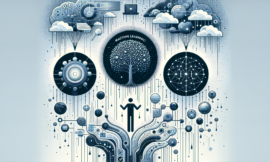In recent years, the term Generative AI (GenAI) has gained significant attention in the tech world. But what exactly is it, and why is it becoming so important? If you’re new to the concept, don’t worry—this post will give you a comprehensive introduction.
What is Generative AI?
Generative AI refers to a subset of artificial intelligence focused on creating new content, whether it’s text, images, music, or even entire virtual worlds. Unlike traditional AI, which is designed to perform specific tasks (like recognizing faces or playing chess), generative AI can produce original outputs that are not explicitly programmed.
At the heart of generative AI are complex algorithms and models, often involving deep learning and neural networks. These models learn patterns from large datasets and use this knowledge to generate new, similar content. The most popular type of generative AI model today is the Generative Adversarial Network (GAN), which consists of two competing networks—the generator and the discriminator—that refine each other’s output.
Key Applications of Generative AI
- Art and Design: One of the most exciting applications of generative AI is in creative fields. AI artists use models to generate artwork that ranges from abstract paintings to realistic portraits. Graphic designers use it to create new design elements or even complete layouts. Some fashion designers are experimenting with AI-generated clothing patterns.
- Text and Language: Tools like OpenAI’s GPT-3, a powerful language model, can generate human-like text. These tools are used for everything from drafting emails to writing stories or even code. They can also help in translation and summarization tasks.
- Music Composition: Generative AI can compose music in various styles. Whether you’re looking for background scores for videos or experimenting with new musical genres, AI can provide a unique and endless source of inspiration.
- Game Development: In gaming, generative AI can create entire worlds, characters, and even plotlines. This allows for more dynamic and engaging experiences, as the content can adapt to the player’s actions.
- Healthcare: Generative AI is also making waves in medicine, from generating realistic medical images for training to discovering new drugs by simulating chemical reactions.
How Does Generative AI Work?
To understand how generative AI works, it’s helpful to know a bit about the underlying technologies. Two key components often used are neural networks and deep learning:
- Neural Networks: Inspired by the human brain, neural networks consist of layers of nodes (neurons) that process data. They are particularly good at recognizing patterns.
- Deep Learning: A type of machine learning that uses multi-layered neural networks. It excels in handling large, complex datasets and is a cornerstone of generative AI.
Generative AI models typically undergo a training phase, where they learn from a vast amount of data. For example, a model trained on thousands of landscape photos can later generate new, similar landscapes. The quality and diversity of the output depend on the data quality and the model’s sophistication.
Ethical Considerations and Challenges
While generative AI offers exciting possibilities, it also raises ethical questions. For instance, AI-generated content can be used to create deepfakes, highly realistic but fake videos that can spread misinformation. There’s also the question of intellectual property—who owns the rights to AI-generated art?
Additionally, the potential for job displacement in creative industries is a concern. As AI becomes capable of performing tasks traditionally done by humans, it’s crucial to consider how these technologies can be integrated into society in a way that benefits everyone.
The Future of Generative AI
Generative AI is still in its early stages, but its potential is enormous. As models become more advanced, we can expect even more realistic and diverse outputs. Industries ranging from entertainment to medicine will likely continue to be transformed by this technology.
The democratization of AI tools, making them accessible to non-experts, will also play a key role in its future. As more people gain access to generative AI, we’ll see an explosion of creativity and innovation.
Conclusion
Generative AI represents a fascinating intersection of technology and creativity. Whether you’re an artist, a writer, a musician, or simply curious, the possibilities are limitless. As we continue to explore and develop this technology, it will undoubtedly shape the way we create and interact with digital content.
If you’re interested in diving deeper, consider exploring some of the current applications of generative AI. Whether it’s experimenting with AI art tools or reading up on the latest advancements, there’s a world of innovation waiting to be discovered.

